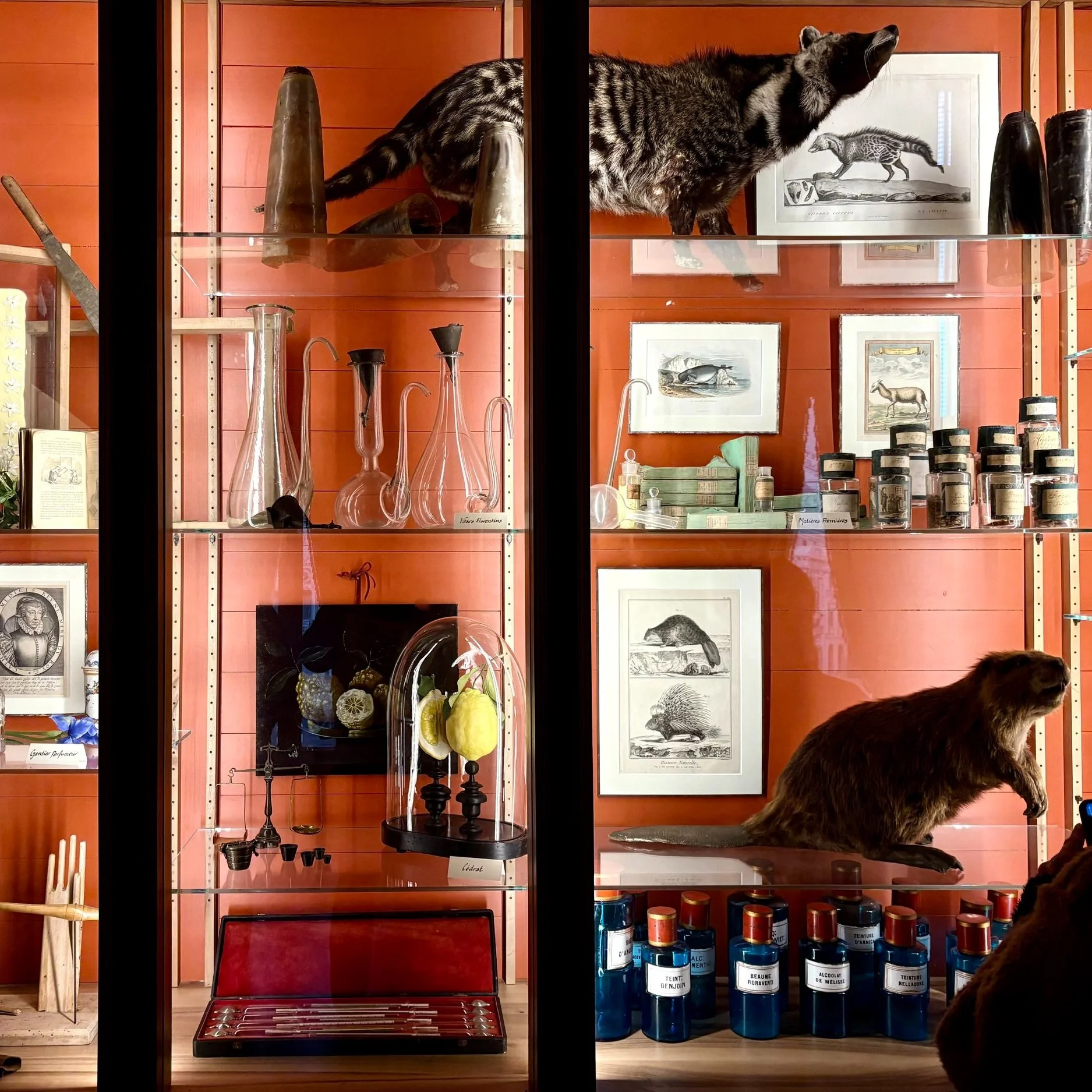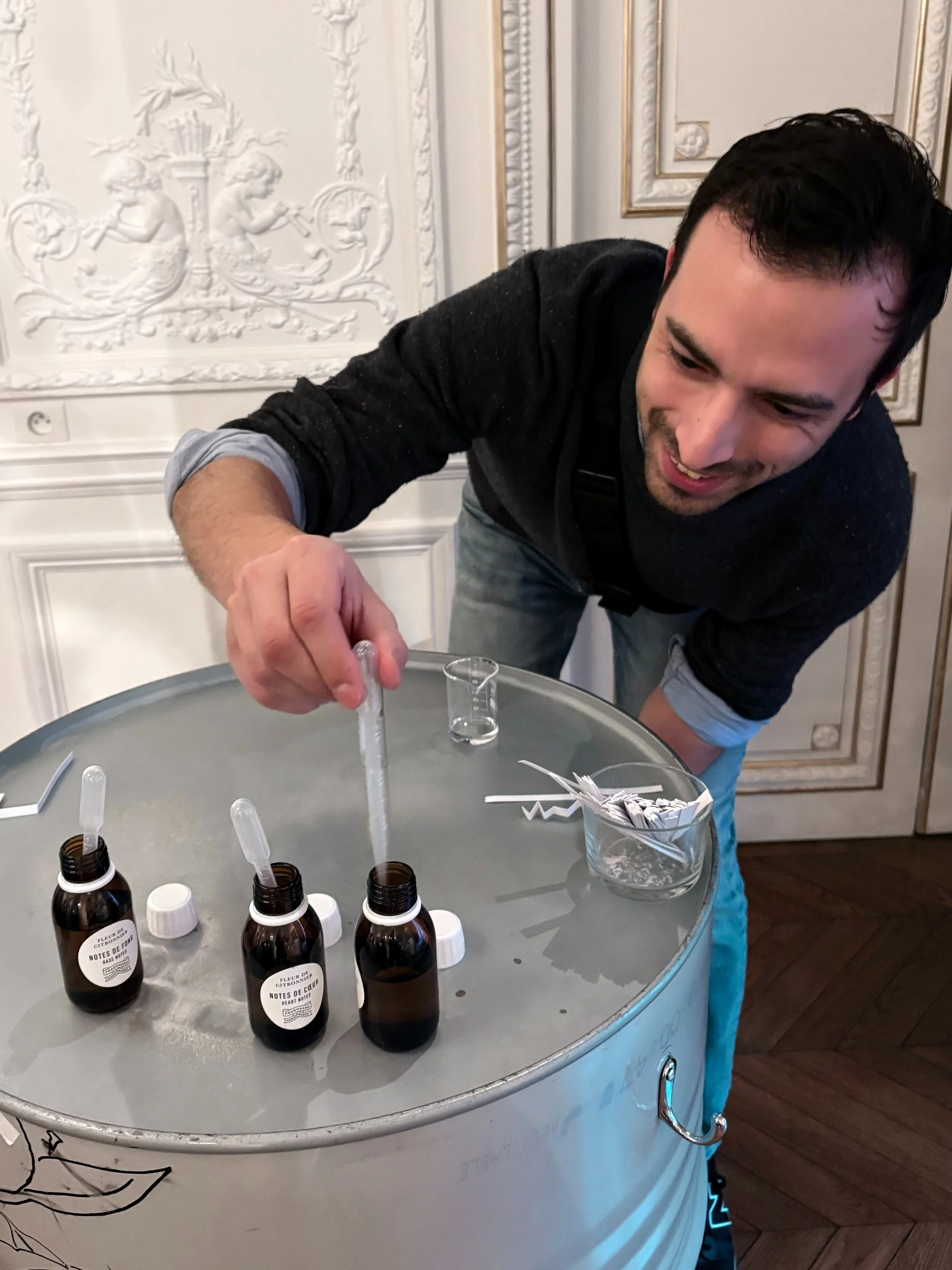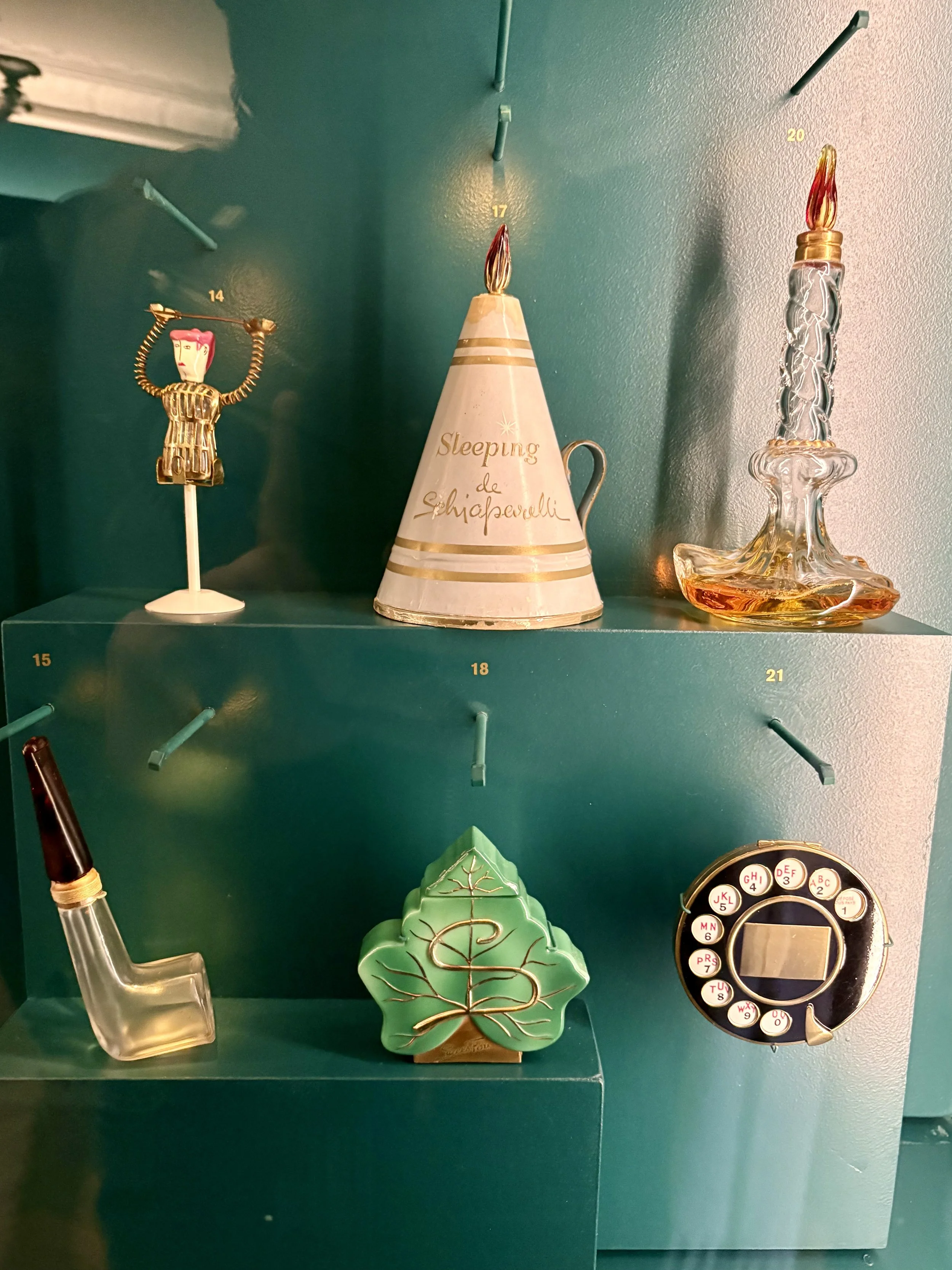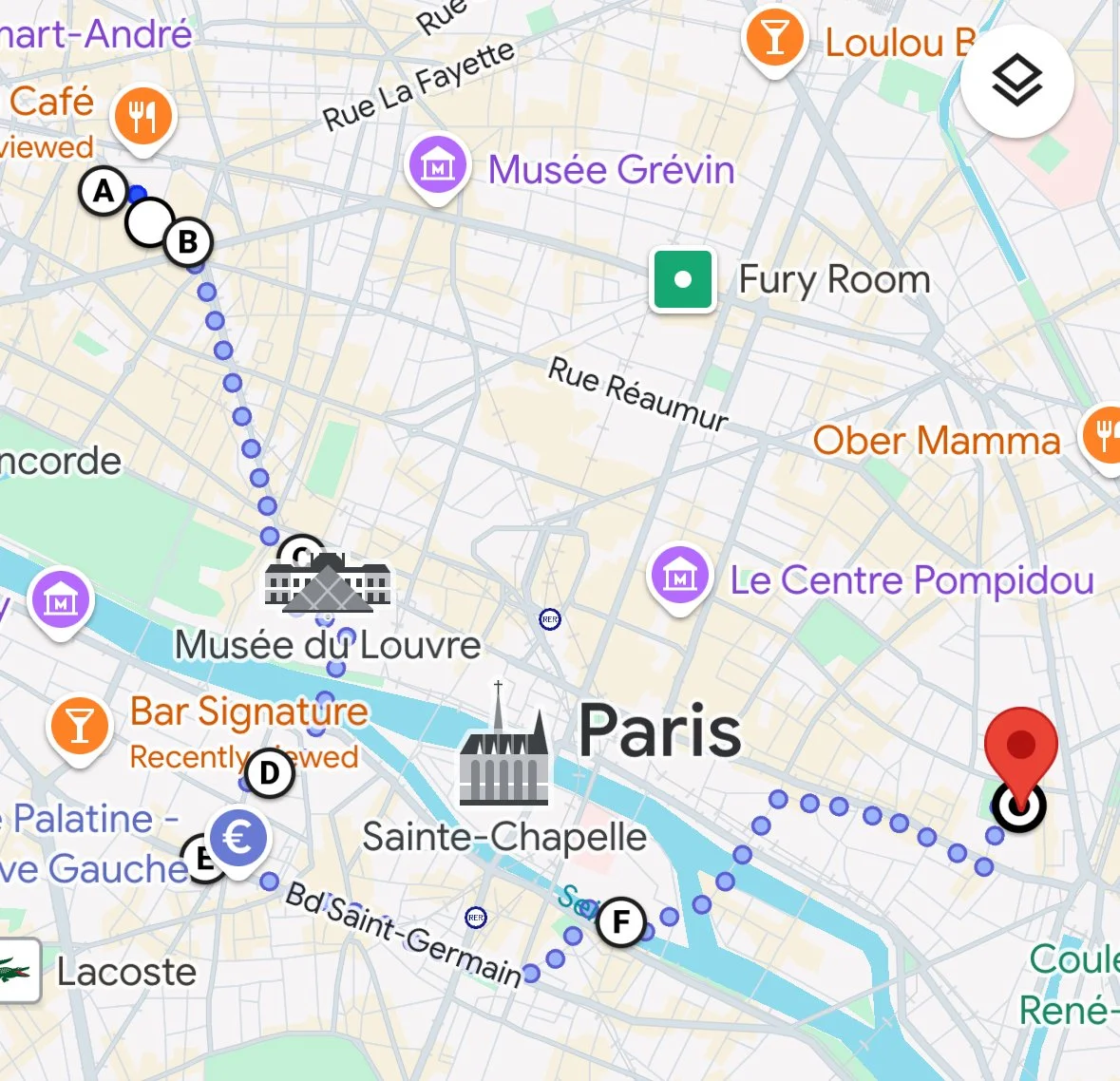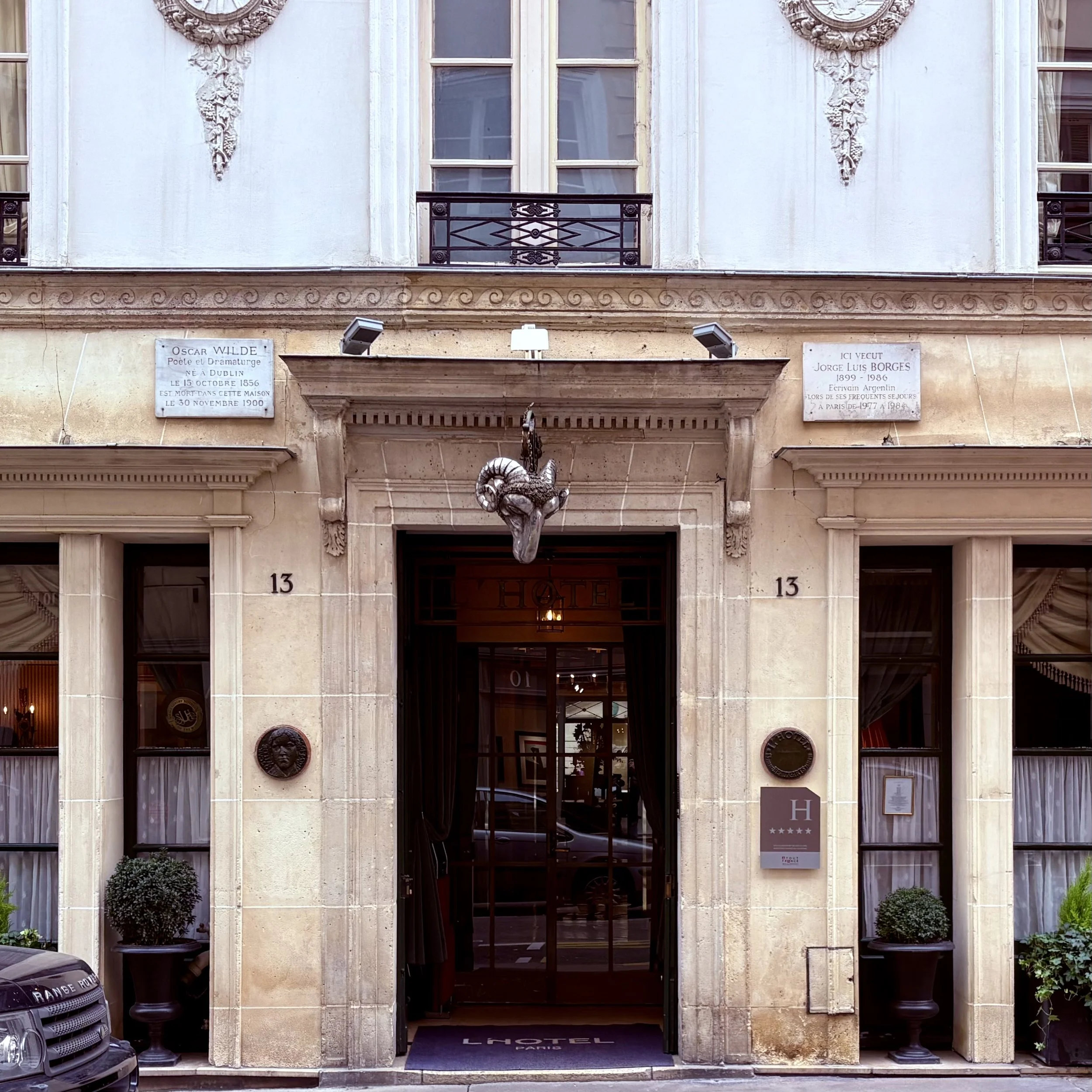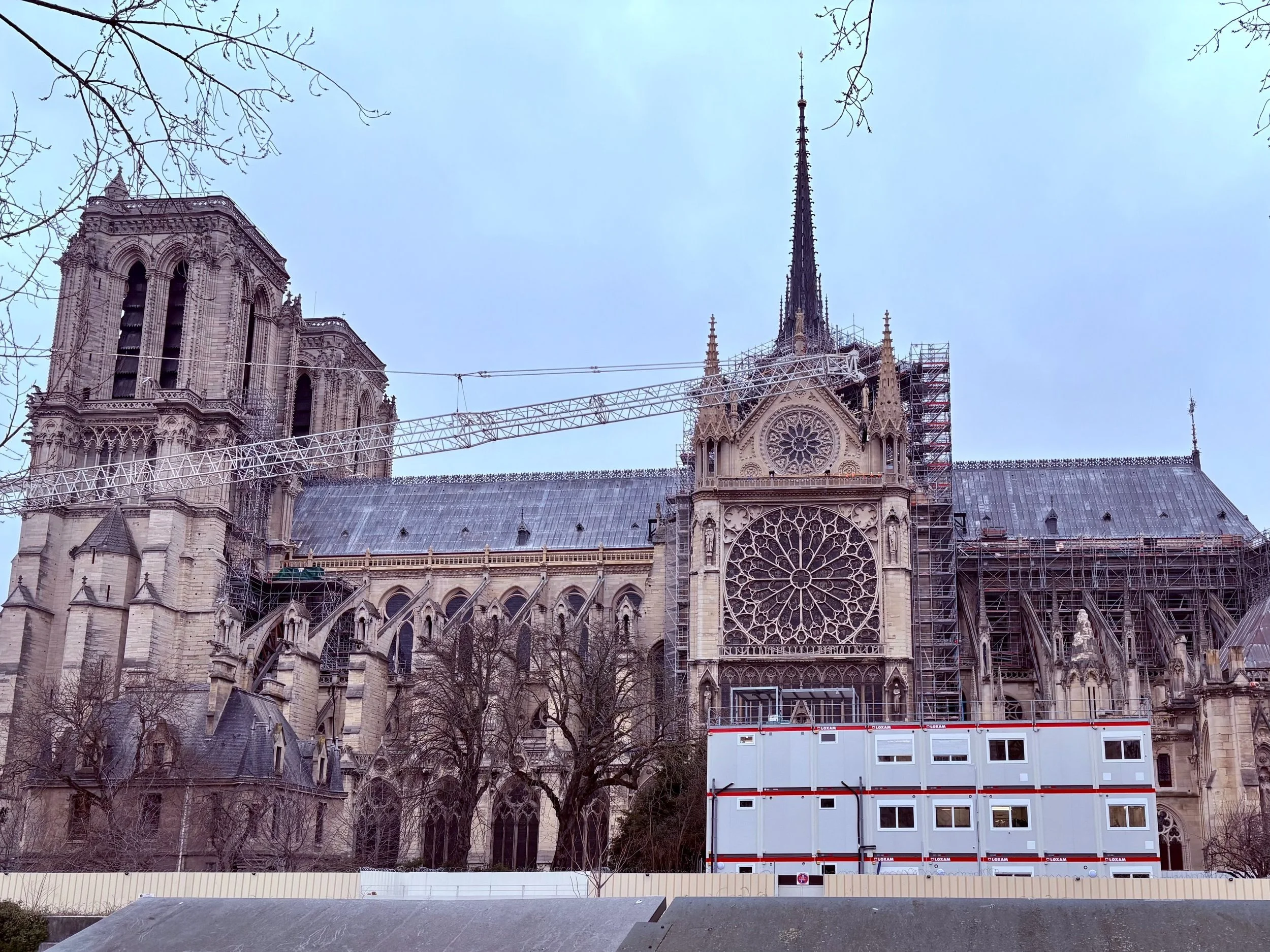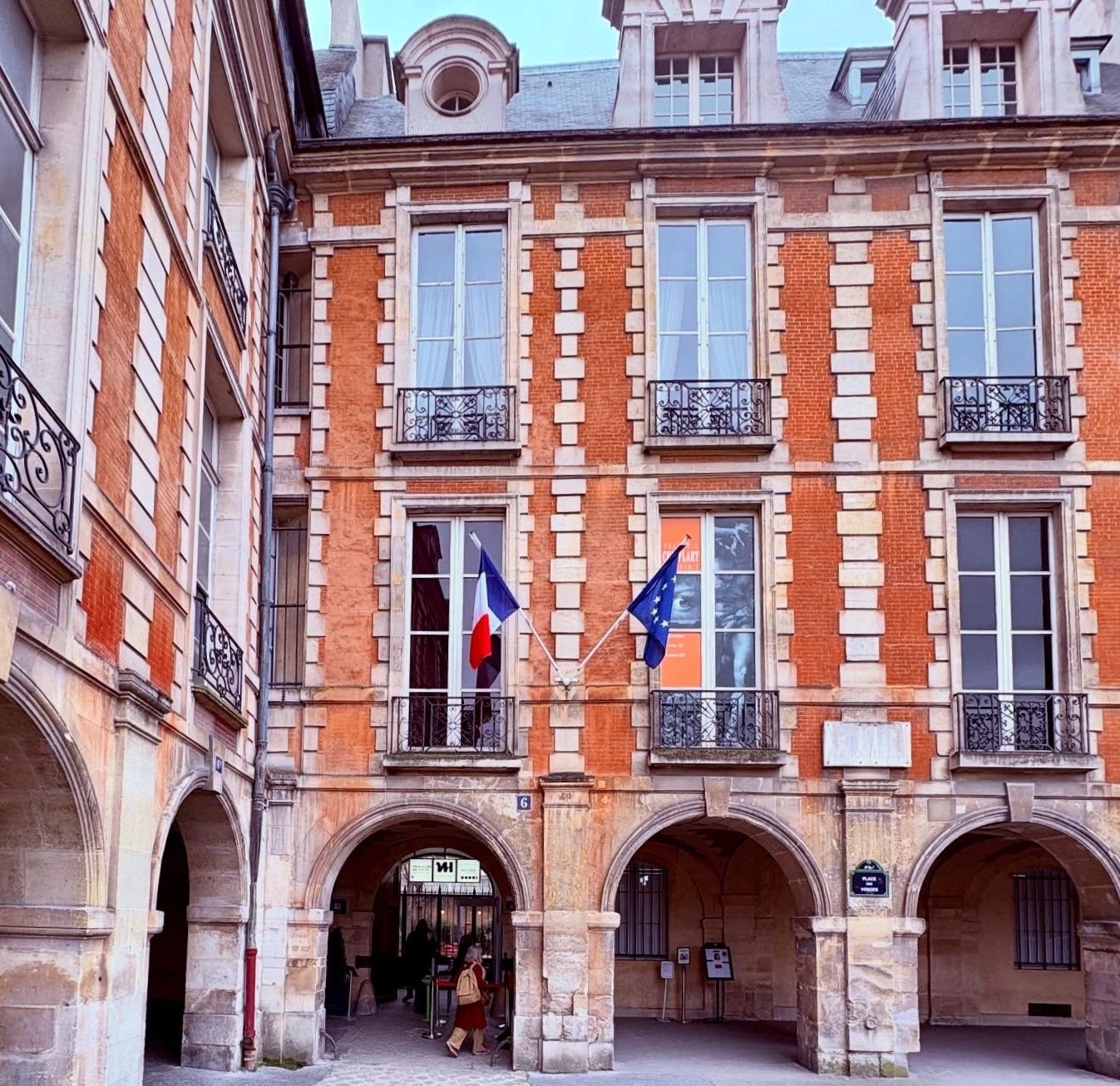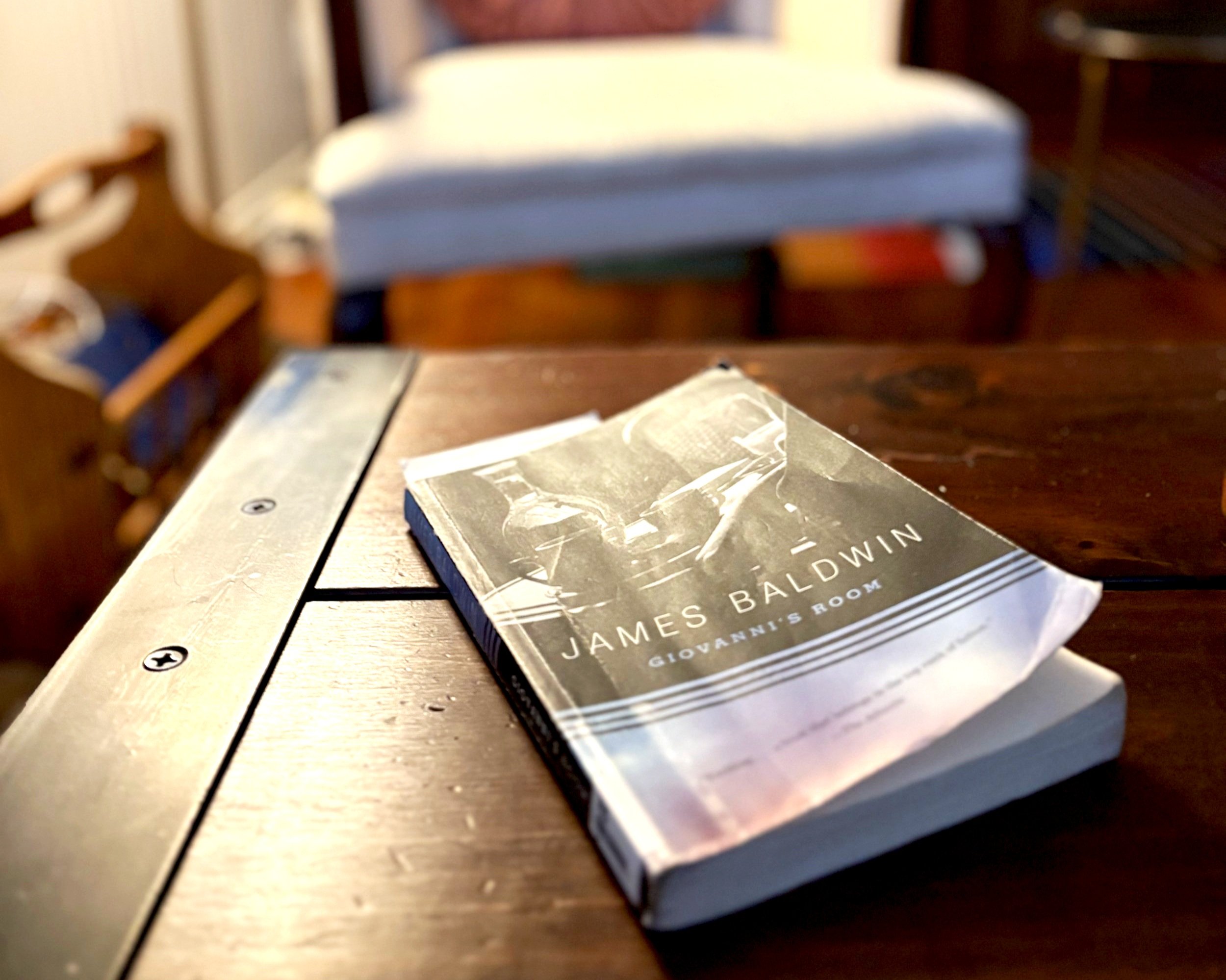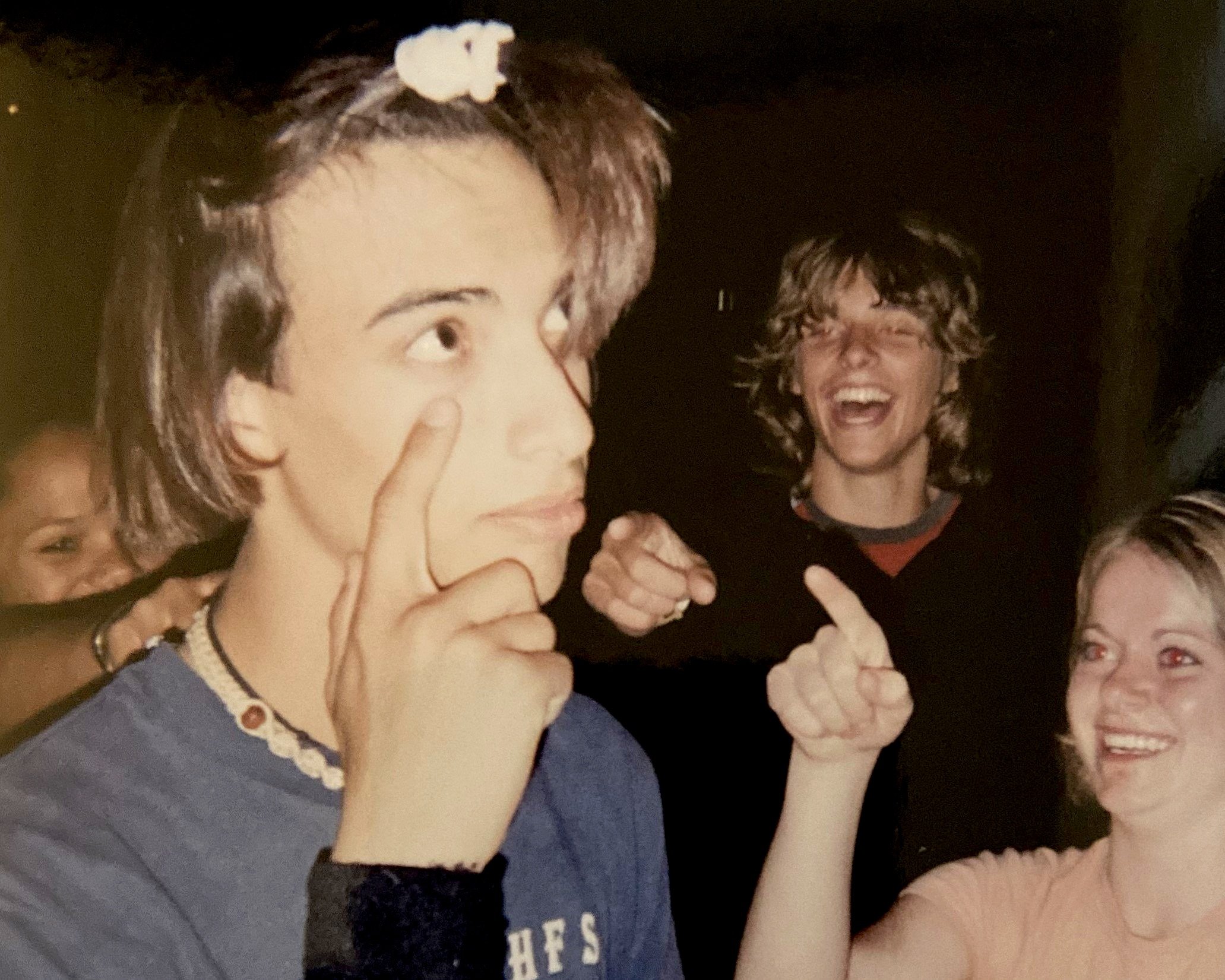Perfume and Prose: A Late Winter Walk through Literary Paris
Maison Sauvage, where pink blossoms cascade from every window. Even in winter, Paris knows how to put on a show.
I arrived in Paris on Wednesday night around 8:45 PM and had a brief mix-up with Uber drivers before finding my way to a bar near my Airbnb. While waiting to connect with my host, I nursed a beer and wrestled with spotty service, eventually using Google Translate to ask for the WiFi password. When my host arrived, she spoke excellent English. We talked about music - she's a musician who also works in the Louvre gift shop - and she offered to get me in for free, though I'd already booked a ticket for Friday night. I bought her wine to thank her for meeting me so late.
The apartment was down a narrow street, through a huge wooden door I wouldn't have noticed without her guidance. A coded entry opened to a small courtyard, then led up four flights of stairs. She helped with my smaller bag and took time to explain the quirks of the space - clearly proud of it, as she should be. The small apartment felt spacious with its beautiful parquet floors and Juliet balcony. A five-foot tall rectangular doorway led to a tucked-away bathroom. Having laundry in the unit was a bonus for my extended stay. Despite my exhaustion, I unpacked and settled in before finally sleeping around 2:00 AM.
Home base in Belleville - my cozy corner of Paris for the next week and a half. The desk is already set up for morning writing sessions.
I had a perfume making class scheduled for 10:00 the next morning. Even with about five hours of sleep, I woke naturally well before my 8:00 alarm. My host had left fresh squeezed orange juice, bread, butter, and jam. I had breakfast at the window, looking out at the rooftops while planning my route. The metro proved more challenging than London's convenient contactless system. I struggled with the self-service screens, attempted broken French with an unresponsive booth attendant, and eventually ended up with a fistful of tickets for 22 euros.
Notes on Perfume
A cabinet of curiosities displaying the traditional raw materials of perfumery - civet, musk, and ambergris - animal-derived ingredients that were once essential to the perfumer's palette.
The journey from my graffiti-adorned Belleville neighborhood to the opulent Opera district showcased Paris's distinct personalities. Despite not being at home with the language, I felt more at home here with the culture than I had in London. Something about the city’s creative energy, the artists and musicians working in cafés and bars - it reminded me of the Northwest's creative communities, where I'd spent so many years.
My interest in perfume traced back to reading Patrick Süskind's Perfume: The Story of a Murderer years ago. The novel had opened my eyes to the artistry of scent. In an age where so many commercial products can be recreated at home, perfume stands apart - its creation is an art form requiring years of training and dedication to master. The reality of perfume production would soon reveal itself in fascinating detail during my morning at the museum.
The class itself was brief - just 10 to 15 minutes of actual perfume making - but well-structured. The guide covered the essentials: perfume's composition of tête (head), coeur (heart), and fond (base) notes. They had prepared three jars for our experimentation: notes de tête blending citrus scents including grapefruit, lemon, and apple; notes de coeur featuring jasmine and gardenia; and notes de fond containing Virginia cedar and musk. We merely had to mix to our liking.
At the Grand Musée du Parfum, getting hands-on with fragrance creation. Learning the art of perfumery in a city that defined it.
We toured the museum's collection of vessels, spanning from ancient Egypt to modern times. During our tour, we learned about perfume's role during the Plague. People began wearing fragrance because they believed the disease was transmitted through bad smells. As perfume grew in popularity, people paradoxically stopped bathing - a practice that actually contributed to the disease's spread. The large distillation vessels displayed in the center of the room illustrated the intensive processes used to create perfumes. One liter of rose essence, for example, takes a full four tons of roses to produce.
A traditional essential oil distillery. These copper stills and extraction equipment are a reminder of the intensive process - it takes about 4 tons of rose petals to produce just 1 kg of pure rose essential oil.
In the gift shop, while sampling various perfumes and reviewing application techniques, I ended up buying a bottle of Diamant on our guide's recommendation, taking advantage of a group discount. It wasn't my usual style, but I found myself checking my wrist throughout the day, appreciating how the scent evolved.
A collection of artist-designed bottles, showing how marketing transformed perfume - today, about 80% of a fragrance's cost goes into the vessel and advertising rather than the scent itself. (Bottom right) Dalí's iconic 'Téléphone' bottle for Schiaparelli (1935). Each number combination was meant to create a 'telephone call' to memories through scent.
At the Cafe
After making my purchase, they let me return through the museum for free. I would have stayed longer, but my modest breakfast had left me famished. I found myself in the touristy, expensive area near the opera house, but managed to find a reasonably priced traditional café next door. A group of Spanish-speaking tourists came in after me, and I ended up chatting with a Mexican couple at the next table.
The husband worked in Indiana and spoke decent English, but just enough that I had to meet him halfway with Spanish. My brain was starting to short-circuit from switching between French (my weakest but most needed language), Russian (my strongest, but barely usable when chatting with the San Diego Russians from my perfume class), and Spanish. Still, I was surprised at how far I got with what I knew of each. Years of classes, Duolingo, Pimsleur courses, and reading had paid off more than I'd expected, even if I'd felt hardly prepared coming over.
Into Literary Paris
My walking route from the Parfum Museum down through some of Paris's most storied neighborhoods - from the luxury of Opera district to the historic Marais.
Stepping out of the café, the scent of fine cigarettes caught my attention. I was tempted to buy a pack - I only smoke on special occasions now, and this seemed to qualify - but I didn't spot any shops nearby. The prices would be high here anyway, so I decided to wait.
The weather hadn't warmed up as predicted, and I was feeling the chill. I turned up the faux fur collar on my motorcycle jacket. Movement kept me warm - a benefit of my refusal to fully acclimate to Florida weather so I could still appreciate walks in colder climates. The overcast sky felt familiar after years in the Northwest, almost homey.
My route took me from the Parfum Museum down through some of Paris's most storied neighborhoods, from the luxury of the Opera district to the historic Marais. The Palais Garnier stood as my first landmark, Charles Garnier's masterpiece exemplifying the grandeur of Second Empire architecture.
In the Louvre courtyard, the winter air sharpened. I finally buckled the collar strap on my jacket to hold it closer to my neck and pulled on my beanie and gloves. The transformation from royal palace to the world's most visited museum was evident in the sweep of the space, even on this quiet winter day.
The Louvre courtyard - from royal palace to the world's most visited museum.
At the Pont des Arts, I noticed new love locks appearing despite the city's attempts to eliminate them from the railings. The original locks were gone, but clearly the romance of the tradition persisted.
Outside L'Hôtel, formerly Hôtel d'Alsace, I paused to read one of my favorite personal proverbs - Oscar Wilde's words on temptation displayed in both English and French: “The only way to get rid of temptation is to yield to it. Resist it, and your soul grows sick with longing for the things it has forbidden to itself, with desire for what its monstrous laws have made monstrous and unlawful.”
“The only way to get rid of temptation is to yield to it. Resist it, and your soul grows sick with longing for the things it has forbidden to itself, with desire for what its monstrous laws have made monstrous and unlawful.”
I've returned to these words often when examining my own hesitations, questioning whether they stem from genuine wisdom or unnecessary restraint.
I ventured inside L'Hôtel to glimpse Room 16, where Wilde spent his final days and famously quipped, 'My wallpaper and I are fighting a duel to the death. One or the other of us has to go.' Despite the gorgeous interior, I couldn't see his room - it was occupied. The concierge, though in the middle of a phone call, politely explained they needed owner permission for photos and suggested I return another day.
L'Hôtel (formerly Hôtel d'Alsace), where Oscar Wilde spent his last days in Room 16. "My wallpaper and I are fighting a duel to the death. One or other of us has to go," he famously quipped from his deathbed in this very building.
Les Deux Magots and Café de Flore, just steps apart, had long been the heart of Paris's literary scene. Les Deux Magots was temporarily closed for renovation, scaffolding obscuring the café where Hemingway and Joyce were once regulars. Next door, Café de Flore remained open - the place where James Baldwin wrote much of Go Tell It on the Mountain and where Sartre and de Beauvoir later made their second home. Since the 1920s, these cafés had served as twin havens for writers and intellectuals, their marble-topped tables witnessing countless literary discussions. While I didn't stop in - the prices in these historic spots were steep for my first day's budget - just passing by felt significant.
On Sacred Ground
I kept thinking about an Axios podcast I'd listened to on my last day in London - an interview with Phil Cousineau about The Art of Pilgrimage. He had talked about how being in a place and touching a relic can have a grounding effect. It strikes me as a kind of magical thinking, but I do believe that the mythology of a place and what we know - or think we know - about it can impact our experience and help us feel in touch with it. Each historic café and building I passed seemed to validate this theory.
Even in winter, Paris asserted its beauty. The Maison Sauvage's pink blossoms cascaded from every window, defying the season. At Notre Dame, I caught the moment a pigeon flew through my frame, distracting one passerby's attention from the cathedral. The ongoing reconstruction, nearly six years after the Notre Dame fire, continued behind scaffolding and temporary structures.
Notre Dame Cathedral - caught the moment a pigeon flew through my frame, distracting one passerby's attention from the facade.
A glimpse of Notre Dame's ongoing reconstruction. Nearly six years after the fire, the cathedral's rebirth continues behind scaffolding and temporary structures.
My final stop was Place des Vosges No. 6, Victor Hugo's Paris residence from 1832-1848. Here, he wrote much of Les Misérables and now the museum celebrates his legacy. Standing there, I felt myself absorbing each location into my being, understanding viscerally what Cousineau meant about the power of place.
Every cell in my body wanted to keep exploring, to keep walking these streets and discovering more corners of the city. But a quiet, rational voice in the back of my head reminded me I was tired. I finally conceded and headed back to Belleville, where I found groceries for significantly cheaper than even a couple of beers would have been along the Seine.
Back in my apartment, I wrote for a bit, processing the day's experiences. By 8:00, exhaustion won out completely. I fell asleep with the lingering scent of Diamant on my wrist.
Place des Vosges No. 6 - Victor Hugo's Paris residence from 1832-1848, where he wrote much of "Les Misérables." Now a museum celebrating his legacy.

